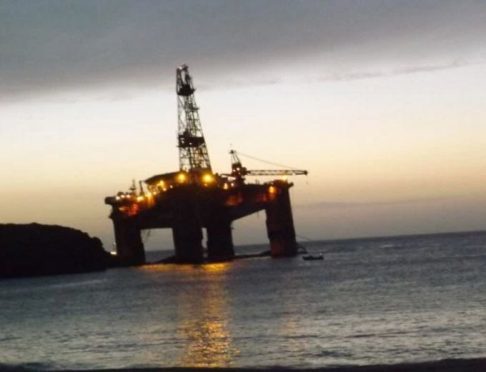Rita Campbell – PA copy
The rig which ran aground on Lewis two weeks ago is on its 54-mile journey to the other side of the island – albeit at a slower rate than anticipated.
The Transocean Winner drilling rig was successfully refloated at high tide in Dalmore Bay, near Carloway, at around 10pm on Monday.
Two tug boats are taking the 17,000-tonne structure to Broad Bay, on the east side of the island, where experts will assess the damage.
Hugh Shaw, the official overseeing the operation, said he was pleased the refloating operation was completed successfully.
He said the journey to Broad Bay is taking longer than initially estimated, and the rig was now due to arrive at its destination in the early hours of this morning.
Mr Shaw, the Secretary of State’s representative for maritime salvage and intervention, said: “I think all the teams on board both the tugs and on the rig did a fantastic job and the rig is now on its way, albeit making a slow passage, but she’s heading round towards Broad Bay.”
Eight anchors were being laid out in Broad Bay to hold the rig in place.
Transocean will then begin the assessment process – which includes putting divers in the water – to look at the damage the rig has suffered; a process which could take until the middle of September.
Mr Shaw said: “There may be the opportunity to effect some temporary repairs in Broad Bay itself but that would only be very light engineering if we do anything there.”
Options after that include towing the rig to wherever Transocean intends to take it, or, if the damage is more significant, officials may consider bringing in a semi-submersible ship to move the vessel from Broad Bay.
He said no decisions had been made about where the rig could be decommissioned.
The semi-submersible structure was blown ashore at Dalmore during a towing operation on Monday August 8. The towline between the rig and its tug was lost en route from Norway to Malta amid high winds and heavy seas in the early hours that day.
The rig grounded with 280 tonnes of diesel on board and two of its four fuel tanks were damaged in the incident.
It resulted in the loss of 53,000 litres of fuel, most of which is thought to have evaporated with no damage to the environment.
